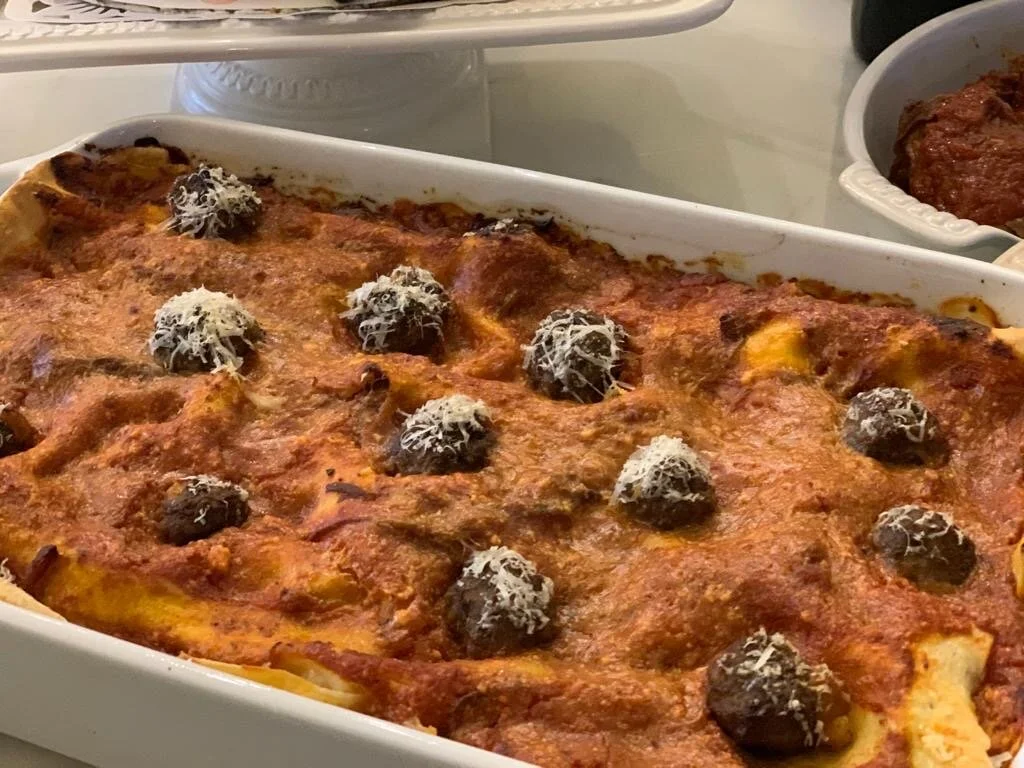Celebrate: Five Carnival Traditions in Naples
Carnevale in Old Naple, Pulcinella in the middle!
Every year Catholic cities all over the world celebrate carnival— or carnevale in Italian. The carnival season reaches its zenith with Fat Tuesday (Martedi Grasso), a day of excess that precedes the more somber Ash Wednesday. After that, we settle into the lenten season, a 40 day period of fasting and reflection.
Naples, as the former capitol of the Kingdom of Two Sicilies, is home to uniquely Southern Italian carnivalesque rites and rituals. Many of these traditions feature fertility rites and gluttonous feasts as a way to stave off and counter-balance the stark period of Lenten fasting to come before Easter.
The word carnevale provides insight into how these bacchanalian rituals in Naples evolved millennia ago. Carnevale comes from the term carnem levare which in English means to take away meat. To prayerfully honor the crucifixion and resurrection of Christ, early Christians abstained from consuming meat in the 40 days prior to Easter, known as Lent.
When the Bourbons still ruled Naples prior to the unification of Italy in 1861, things were particularly crazy. Beloved local King Carlo Borbone built the so-called cuccagne, wooden structures covered with food that he donated to people throughout the city. His courtiers fondly recounted how meats of every cut were draped over these structures in popular neighborhoods of Naples.
Neapolitans continue to embrace the season with characteristic gusto, appetite and a touch of weirdness. This year, Martedi Grasso falls on February 25th, and to help you celebrate the season, we highlight the most notable Neapolitan Carnevale traditions below.
1) Blood Chocolate Pudding
Carnevale is an indulgent season. Meats, candies, sweets, flesh… In Naples the most oddly indulgent vice of all is chocolate pudding with blood. Carnevale is a winter festival in the Northern hemisphere and tends to coincide with the pig slaughtering season in Italy. No part of the pig in the countryside surrounding Naples went to waste and that included the blood.
Ingenious Bourbon era cooks invented a delicious way to incorporate the pig’s blood into carnevale sweets. They created a rich blood chocolate pudding—sanguinaccio. Since a 1971 Cholera outbreak in Naples, the sale of pig’s blood has been banned in Naples. Today, locals enjoy a pig blood free version of Sanguinaccio with a fritter known as chiacchiere.
2) Jokes
Neapolitans always enjoy a good joke and around carnevale the joking reaches a seasonal fever pitch. As the old local proverb goes, “a Carnevale ogni scherzo vale—at Carnival, every joke has worth.” That includes pranks of all varieties. The more childish the better. The most popular would include confetti bombing your friends and the occasional egg toss.
3) Lasagna
Most people outside of Italy are more familiar with the Bolognese style of lasagna featuring slow braised ground meat, fresh sheets of pasta and béchamel sauce. The Neapolitan lasagna is an entirely different baroque beast. Gilding the lily would be the best way to describe this meaty-meatball lasagna. After slow cooking chunks of meat, sausage, pork ribs and cured pork in San Marzano tomatoes to make a traditional Neapolitan style ragù, locals puree the ragù and layer with pasta also adding eggs, smoked provolone, fior di latte cheese and mini meatballs.
4) Costumes
During the height of Carlo Borbone’s reign, Neapolitans dressed in elaborate costumes and attended balls at royal palaces during carnevale. Meanwhile, the general masses enjoyed popular theater and marionette puppetry. The most popular character was Pulcinella. The ultimate huckster, jokester trickster, Pulcinella was the ideal folkloric embodiment of the carnevale spirit in Naples. Today children in Naples more commonly dress up as fireman, sports stars and dinosaurs. But occasionally when you are least expecting in, a full grown Pulcinella might approach you in the old center of Naples and confetti bomb you.
5) Carnival Funeral
Carnevale is a man. The personification of the celebration is a fat, happy man who deeply enjoys the pleasures of the flesh. And even carnevale must meet his indulgent end. After a season of bacchanalia that begins with Saint Anthony the Abbot Day on January 17th and ends on Fat Tuesday, carnival marks the rite of passage from old year to new, of rebirth and regeneration.
In the wee hours of Fat Tuesday, the people of Naples throw Carnevale a big fat funeral. After weeks of eating too much salami and chocolate, the fun must come to an end. Carnevale dies for now and will be reborn again next year. The Carnevale spirit , like many Neapolitan symbols including the iconic volcano Vesuvio, encapsulates the duality of life and death, pleasure and pain, fertility and scarcity.







